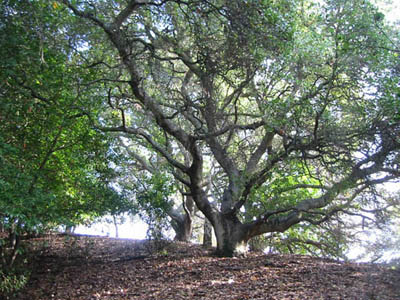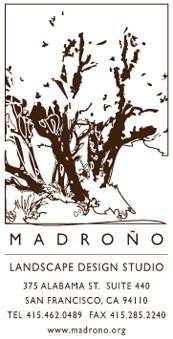 My comrade Pete Veilleux, native plant landscaper and bushwhacking enthusiast nonpareil, asked if I would like to join him on a hike to see a secret corner of Oakland. Not far from his house in the teeming East Bay 'hood where oaks no longer grow, steep mountains cleave the landscape and bulwark an ancient, fragrant forest of bay, oak, and madrone. So we climbed the ridge between Cull Canyon and the Upper San Leandro watershed, near Dinosaur Peak so-called for its rocky outcrops like the spiky plates of a stegosaurus, to seek out some of our favorite native plants and the hidden connections lurking in the everyday.
My comrade Pete Veilleux, native plant landscaper and bushwhacking enthusiast nonpareil, asked if I would like to join him on a hike to see a secret corner of Oakland. Not far from his house in the teeming East Bay 'hood where oaks no longer grow, steep mountains cleave the landscape and bulwark an ancient, fragrant forest of bay, oak, and madrone. So we climbed the ridge between Cull Canyon and the Upper San Leandro watershed, near Dinosaur Peak so-called for its rocky outcrops like the spiky plates of a stegosaurus, to seek out some of our favorite native plants and the hidden connections lurking in the everyday.
No trail marked our route; we parked on a friend's private property and walked for a spell up an old fire road, then plunged into the underbrush. Directions? We headed due southwest and uphill.
Veilleux waxed rhapsodic about the bay trees all around us: the manifold shapes of trunk, the lush color of the leaves when they catch the sun, and above all the scent, that wonderful smell. "I think Umbellularia californica is the most versatile and under-used California native plant in the landscaping trade," he said.
"Not in my yard," I replied. The mature bay reaches heights of 120 feet, and as wide. He allowed that regular pruning for size might be necessary. Mixed among the bays all around us, oaks and madrones whispered in the wind as if in awe of the bay's position as climax forest community, the ultimate dispatcher of other trees in the ecosystem.

